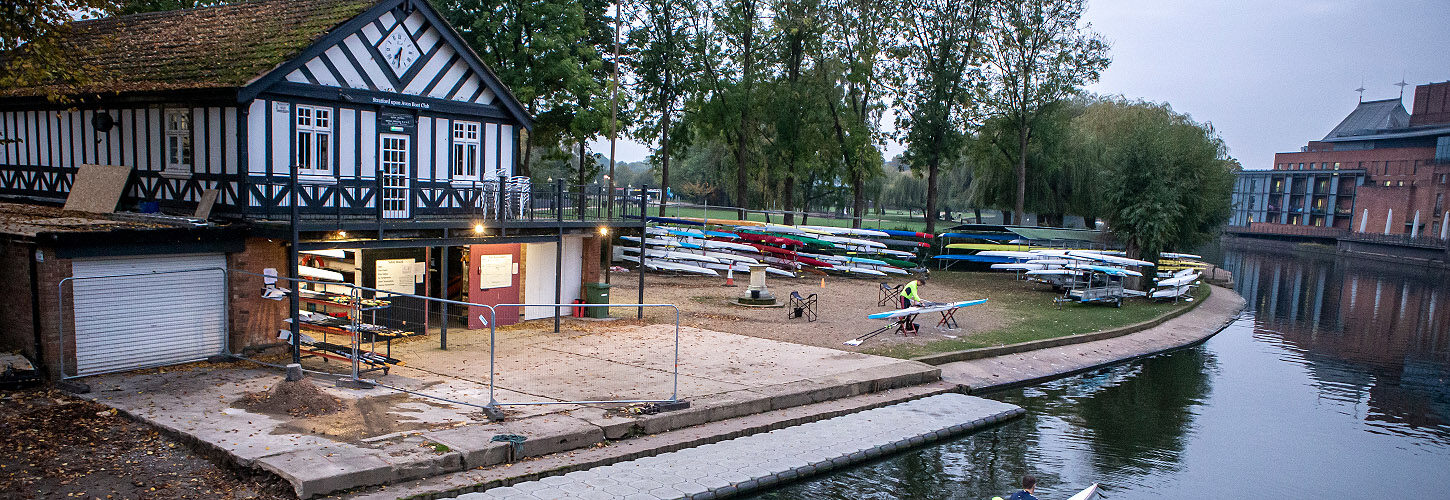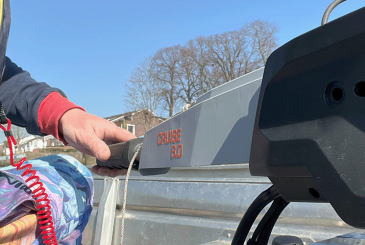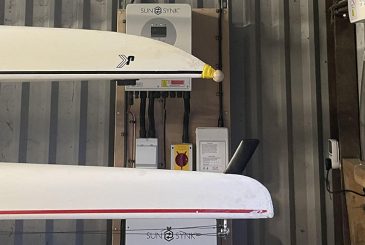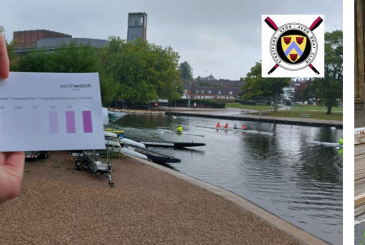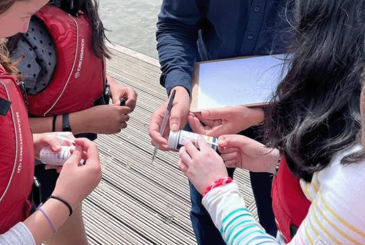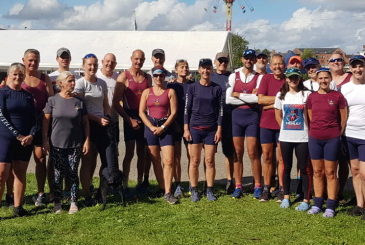Continuing our series on the British Rowing Club Guides, Zoe Gullen explores the Club Governance and Club Management Guides, highlighting topics such as membership, increasing club income, transporting trailers, club welfare, committees and succession planning
Rowing clubs, though almost always volunteer-run, are businesses and need effective management to be dynamic, safe environments for members to achieve their aims. British Rowing’s Club Management Guide, developed to provide a management framework and support growth, is comprehensive but not prescriptive, so clubs can tailor the advice to their own circumstances, and features case studies of clubs around the country as real-life examples of how to put things into practice. You can download all our Club Guides here.
The Club Management Guide
The membership is the reason for any club’s existence, and one of the main revenue streams, so it is vital clubs ensure members feel that they are getting value for money, and are supported and valued in achieving their aims.
The guide identifies six ‘key ingredients’ not merely for retention, but also to deliver the best possible experience for members. These will help clubs to understand and engage with their members, to engender a strong sense of community, and to enable and empower members to give back. It stresses the importance of effective communication and celebrating achievements, but also of being honest about what isn’t working, and why members might choose to leave.
Recruitment is also essential if clubs are to thrive, and the Club Management Guide offers ideas for appealing to new members, as well as more general promotion of the club. The foundation of this is defining a club brand, identifying the target audience and the most effective ways of reaching it. The marketing and promotion section includes a quick course in the fundamentals of marketing – the 4Ps of Product, Price, Promotion and Place – alongside a step-by-step outline for developing a marketing strategy, and the key elements for delivering a successful campaign.
“By increasing our media activity, we have seen an increase in the reputation and profile of the club, both locally and nationally, with more local people wanting to become involved”
Stratford upon Avon Boat Club (SUABC), one of the case studies, has seen the benefits of a joined-up communications strategy across website, Twitter, Facebook and YouTube, and also sends out media releases to meet the deadlines of local newspapers. This creates a virtuous circle of promotion and growth.
Christopher Best of SUABC says: “Our aim was to position Stratford as a successful club, knowing that a successful club is a sought-after club. By increasing our media activity, we have seen an increase in the reputation and profile of the club, both locally and nationally, with more local people wanting to become involved.”
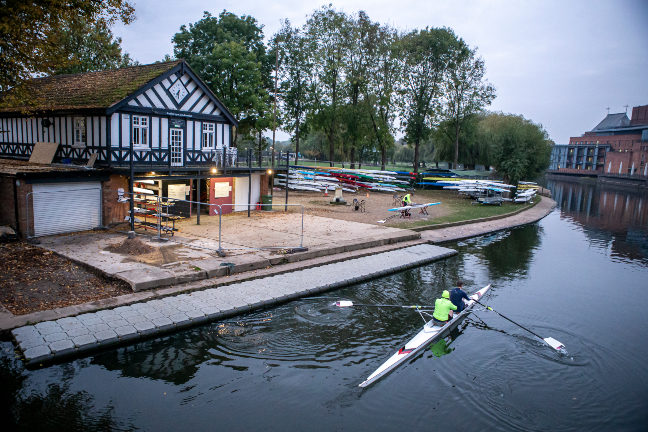
As well as a boost to membership, the club’s profile and its brand recognition has led to a number of partnerships, particularly with local businesses for the annual regatta, where benefits for sponsors include promotion across the club’s social media channels, a page in the regatta programme and access to a VIP area to enjoy refreshments while watching the racing.
Stratford has also identified several opportunities to sell advertising space, particularly on its launches.
Christopher says: “You’ve got to keep the club and equipment looking tidy, but it’s such a simple thing, and it’s literally out there on the water, right by the Royal Shakespeare Theatre.”
The club’s location in the middle of the enormously popular tourist town means that advertisers get significant exposure, and the revenue covers the annual costs of running the launches.
The club is also hired out for events, creating another revenue stream and making the most of the site, especially in off-peak hours.
At Bristol Ariel, the club makes use of quieter times for its Go Row Indoor programme. Sessions, which last for 45 minutes, run five days a week; there is also a free taster session on Sundays.
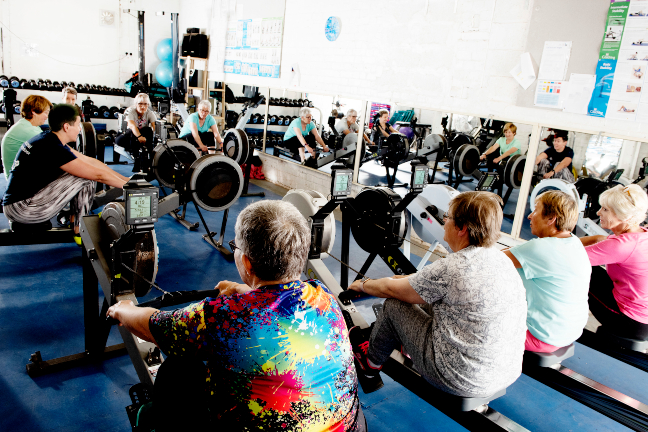
Julien Tavener, the programme coordinator, says that before the pandemic, “we had built it up to a point where it has become a very valuable part of the club”. Not least, Go Row Indoor has “opened up a demographic: older, less active, people who might have issues going to gyms”.
Clearly defined capacity and revenue targets mean that it is not just self-sustaining, but profitable, with the funds ploughed back into the club, funding new gym equipment and improvements to the club environment.
Go Row Indoor can also be a feeder for Bristol Ariel’s learn to row courses. Julien says: “By the time someone starts on one of our learn to rows, they’ll have had six months of Go Row, they’ll know some of the language. They’ve been coming down to the club, so they are familiar with it, they know the people.”
Capitalising on its location across the River Soar from Leicester City FC’s ground, the club has offered parking on match days for more than 30 years
Bristol Ariel defines its twin offerings as ‘indoor’ and ‘outdoor’ rowing and has a specific land membership category, for unlimited Go Row sessions and one members-only class per week. Classes are also available on a pay-as-you-go basis, with an accessible £5 price point.
The majority of the instructors are volunteers, and the club endeavours to make the commitment attractive and something that can be fitted in around their own training.
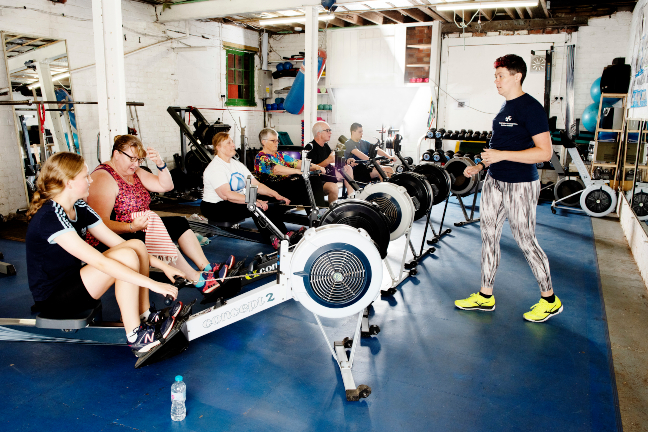
Leicester Rowing Club also relies on a relatively small commitment from club members to sustain one of its main fundraising activities. Capitalising on its location across the River Soar from Leicester City FC’s ground, the club has offered parking on match days for more than 30 years.
Club captain Ben Pickering says: “We have a list of all the matches, and each match will get assigned to a squad.”
Members work in teams of three, and only have to volunteer for one or two match days a year, but, Ben says, “it’s one of our biggest income streams”. Some local businesses also pay a fee to park at the club during office hours, and some staff at the nearby hospital have also taken out an annual parking subscription.
There is a checklist for safe transport to ensure vehicles and trailers are roadworthy and comply with insurance requirements, as well as a long list of tips
In addition to guidance for growth and development, the Club Management Guide covers the day-to-day running of the club as a physical entity, as well as sharing vital information for heading off to competitions and training camps.
A substantial seven-page section on transporting boats sets out the safety and legal considerations such as eligibility for towing, speed limits and compliance with limits on overhangs for safe car-topping of boats, with links to RowSafe for more detailed information, and also to current legislation.
There is a checklist for safe transport to ensure vehicles and trailers are roadworthy and comply with insurance requirements, as well as a long list of tips to ensure safe transport and practical recommendations for making sure drivers are safe and practised towers – such as a test journey on a straightforward local route with an experienced co-pilot. Keep an eye of the Government website to make sure you are abreast of any updated legislation – for instance, the towing rules are changing in November 2021.
The Club Governance Guide
Matters of legal and compliance also extend to the day-to-day running of clubs, and here the Club Governance Guide works in tandem with the Club Management Guide, defining club governance and what is required of British Rowing affiliated clubs. The guide aims to raise the standard of club governance, and to establish benchmarks for best practice, stating that, ‘[i]f rowing is to prosper as a sport, we need a network of strong and sustainable clubs that give members the best club experiences’.
The guide defines good governance: the foundation policies and procedures that promote the integrity and interests both of individual clubs, and also the sport at large. Transparent and responsible management, leadership and governance can only benefit clubs, allowing members to thrive within a safe, well-run environment with clear standards of ethics and conduct on and off the water.
Part of this is a mandatory compliance with British Rowing safeguarding policies, for both children and for adults at risk. There are links to numerous guidance documents and policies, and a precis of the responsibilities of the club welfare officer, to enable this, as well as guidance on safer recruitment, safety online and anti-bullying measures.
Effective governance is delivered by effective committees, and the Club Governance Guide sets out the minimum personnel required, to share the workload and also to avoid conflicts of interest. Again, there are top tips, including creating clearly defined roles and tasks, allowing independence while ensuring accountability, and exploring opportunities for personal development, as well as succession planning to help with continuity in club development.
It is also vital that committees reflect the diversity of the club they serve, so all are represented and have a voice. The guide’s overview of diversity and inclusion covers the requirements under the Equality Act, and also recommendations for steps that clubs can take, not just to promote diversity and inclusion, but to ensure it is central to everything they do, to commit together to a sport for everyone.
Read our article on the Time for Tokyo and Club Adaptive Guides here.
Photos: Drew Smith and Jeni Nott Photography


